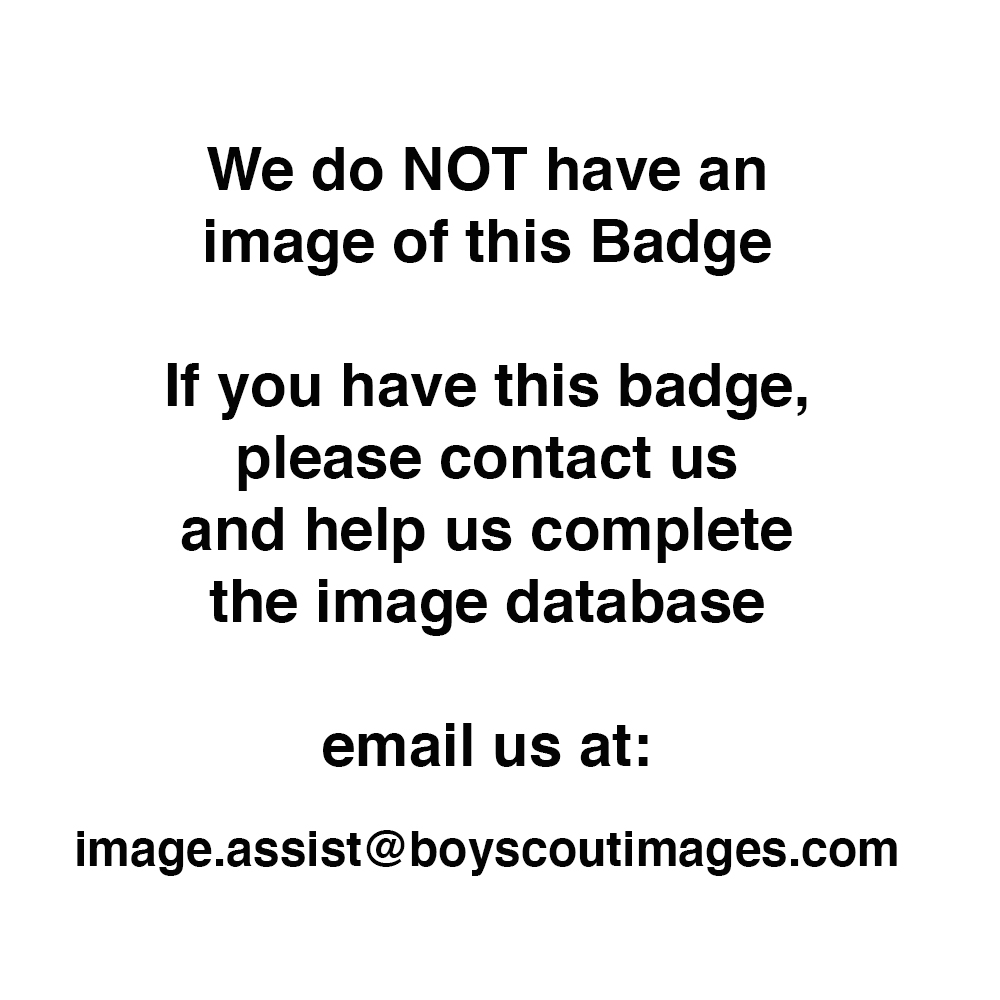
Fig. 1: "Media Not Available"
- Cloth: Heavyweight tan right twill
- Embroidery: Continuous loop silk

Fig. 2: "Media Not Available"
- Back: Plain NO imprint with starch
Item Name: Reptile Study 1938 - 1939
Item ID: RepStu-C3
Collector Rating: 1
Requirements July 1933 until December 1943
1. Know what representative species of reptile (snakes, lizards, turtles, crocodiles) are found in his own state or locality. Be able to identify all these species.
2. Know distribution and typical life history of the crocodilians inhabiting the United States.
3. Be able to distinguish the poisonous reptiles of the United States.
(a) The one kind of poisonous lizard.
(b) Four kinds of poisonous snake, by shape, size, markings, heads, tails or by teeth (fangs).
(c) The location and operation of the fangs of the four kinds of snake.
(d) General distribution of the poisonous forms.
(e) Whether these poisonous snakes are aggressive or defensive, and how far they can strike.
4. Know eight harmless snakes, four of which feed on destructive rodents, and know the food of each. Know how they capture and eat their food, know something of the usefulness of the snake to man. Know how young snakes are produced--from eggs or living young; how and why a snake sheds its skin; why snakes are partly blind prior to shedding; the function of the snake tongue.
5. Know some of the important differences between the groups (snakes, lizards, turtles, crocodiles) as to (a) eyes, (b) ears, (c) teeth, (d) heart, (e) lungs, (f) limbs, (g) tails, (h) scales (shell).
6. (a) Know the typical life history of lizards; how young are produced--from eggs or living young. Recognize and describe five kinds, preferably common to his own region. Know the common food of lizard and their usefulness to man in thus controlling pests. Know how and why a lizard will drop its tail and how it regrows.
7. Know the relative position of reptiles in the animal kingdom. Explain why, where and when reptiles hibernate, and the duration of the hibernation period.
8. Know what first aid treatment should be given in case of poison snake bite and the reasons for the same.



